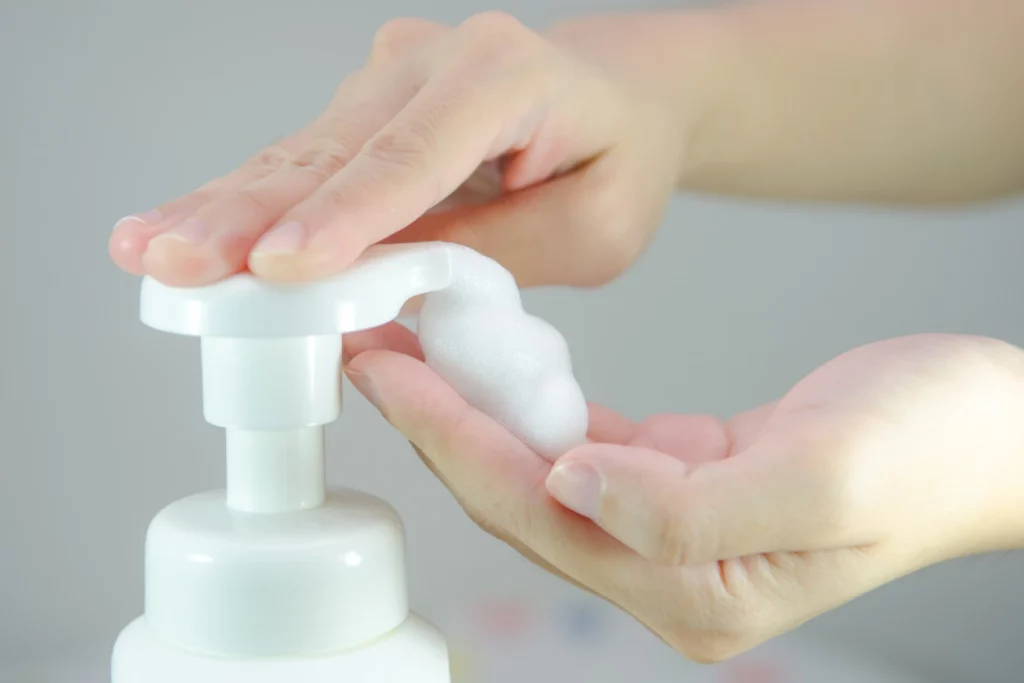Fatty Alcohol Polyoxyethylene Ether: The Safer Surfactant Alternative to NP/OP

Explore the world of Fatty Alcohol Polyoxyethylene Ether (AEO/7 & AEO-9) as a sustainable and environmentally friendly alternative to harmful NP/OP surfactants. This comprehensive article delves into their production, properties, advantages, applications, and the importance of transitioning to these greener surfactants for a cleaner and safer environment.
The Role of Cocamidopropyl Betaine in Shampoo: A Deep Dive into its Functions and Potential Side Effects

Are you curious about the role of cocamidopropyl betaine (CAPB) in your shampoo? This versatile ingredient has been increasingly used in personal care products for its gentle cleansing and foaming properties. But what exactly does it do in your shampoo, and is it safe to use? In this article, we’ll take a deep dive into the functions of cocamidopropyl betaine in shampoo, exploring its role as a surfactant, foaming agent, thickener, and conditioning agent. We’ll also discuss potential side effects and how to choose the right cocamidopropyl betaine shampoo for your specific needs. By the end of this article, you’ll have a better understanding of what makes cocamidopropyl betaine an effective and safe ingredient in your hair care routine.
Cocamidopropyl Betaine(CAPB) in Baby Care Products: What You Need to Know

Cocamidopropyl Betaine (CAPB) is an ingredient that can be found in many baby care products, including shampoos, body washes, and bubble baths. It is a mild surfactant that offers cleansing, texture-enhancing, and conditioning properties, making it a popular choice for baby care products. However, there have been concerns raised about the safety of CAPB, particularly in baby care products. In this article, we’ll take a closer look at what CAPB is, why it’s used in baby care products, its potential risks, and how to make an informed decision when choosing baby care products.
Advantages of Amino Acid-Based Surfactants over Traditional Surfactants

In recent years, there has been increasing interest in using more skin-friendly and sustainable green surfactants in personal care products. Sulfate-free products are gaining more and more attention, and market share. This has led to the development of new surfactants that are milder, non-toxic, biodegradable, and renewable, as alternatives to SLS and SLES.
Amino acid-based surfactants are considered promising alternatives to replace SLS and SLES in sulfate-free formulations.
The Secret Ingredients of HE Detergents: AEO-9, Sodium Polyacrylate, and Enzymes

High-Efficiency (HE) detergents are a smart choice for a clean and eco-friendly laundry solution. With key ingredients like AEO-9, Enzymes, and Sodium Polyacrylate, HE detergents improve stain-fighting, save energy, and provide a pleasant scent to your clothes. Learn how these ingredients work to make your laundry experience better.
Understand the Benefits of Lauramine Oxide in Hair and Skin Care Products

Are you looking for a gentle and effective ingredient in your hair and skin care products? Look no further than Dodecyldimethylamine oxide (DDAO). This versatile surfactant and emulsifier not only helps to cleanse your hair and skin without stripping them of their natural oils, but it also provides a mild, non-irritating lather and boosts the foam and lather of products. And the best part? DDAO is biodegradable and eco-friendly, making it a sustainable option for your personal care routine.
The History and Evolution of Cocamidopropyl Betaine as a Personal Care Ingredient

Cocamidopropyl Betaine is a synthetic surfactant that is widely used in personal care products, such as shampoo, conditioner, body wash, and facial cleanser. It is known for its gentle cleansing and foaming properties, ability to improve the feel and texture of products, and compatibility with a wide range of ingredients. In this blog post, we will delve into the history and evolution of Cocamidopropyl Betaine as a personal care ingredient, tracing its development from its early beginnings to its current state as a widely used and popular surfactant.
Maximizing the Benefits of Cocamidopropyl Betaine for Your Personal Care Products

Cocamidopropyl Betaine is a popular choice for use in personal care products due to its gentle cleansing and foaming properties. It can also improve the feel and texture of products, making them more pleasant to use. In addition, Cocamidopropyl Betaine is compatible with a wide range of ingredients and has excellent conditioning properties for both hair and skin. By understanding the benefits and best practices for using Cocamidopropyl Betaine, manufacturers can create personal care products that are both effective and gentle on the skin and hair. Follow our tips for selecting the right type and amount of Cocamidopropyl Betaine, formulating with it effectively, and properly packaging and storing products containing it to achieve the best results.
Is Sodium Lauryl Ether Sulfate(SLES) safe in shampoos? A Comprehensive Guide

When it comes to choosing the right shampoo, it can be overwhelming to navigate the vast array of options available on the market. It makes it even more mind-boggling as nowadays we are surrounded by massive commercials promoting a dazzling variety of shampoos.
Understanding the ingredients in personal care products is important for a number of reasons. Foremost, it allows you to make informed decisions about the products you use on your body.
A Manufacturer’s Guide to Cocamide DEA: Your Questions, Answered

Cocamide DEA is a widely used ingredient in food and cosmetic products, but also one that often raises questions. For both manufacturers and consumers, it’s important to understand the properties and precautions associated with this particular chemical. In this guide, we’ll provide an overview of Cocamide DEA and discuss its applications, benefits, as well as safety concerns. Our goal is for you to feel confident about Cocamide Diethanolamine in your product formulation—so let’s dive right in!


